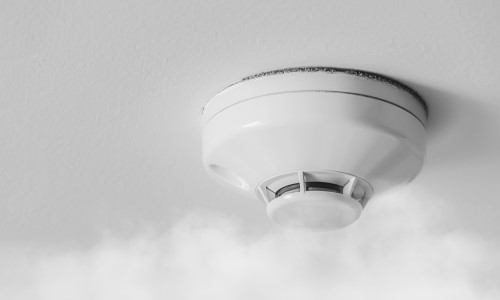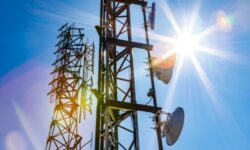Examining Recent Advancements in Heat and Smoke Detection
Over the years, heat detectors have evolved so that their time of detection is shortened and when used properly, can provide detection in areas that smoke detectors cannot venture into.

This is my 100th Fire Side Chat column. Many topics have been covered through the past years on various aspects of fire detection, monitoring and suppression.
For my 100th article, I return to the root of re safety: heat and smoke detection. With the possible exception of manual pull stations, heat detectors have been in use the longest for the detection of fire within a protected premises.
Older versions of heat detectors did not require power to operate and would provide an indication of a thermal event within a building once the temperature from a fire reached a set level. The technology that was used, and is still in use, is similar to that found in sprinklers used for the suppression of fire.
Over the years, heat detectors have evolved so that their time of detection is shortened and when used properly, can provide detection in areas that smoke detectors cannot venture into. These areas include but are not limited to attics, industrial settings, exterior settings, wet and damp environments, and similar circumstances.
The most important item to remember when heat detectors are to be specified is they are not life-safety devices. They are being installed for property protection. This statement is in accordance with NFPA 72, The Fire Alarm and Signaling System Code.
I would agree with this in most examples, but there are uses that can provide an early warning for people to get out of a building prior to smoke detectors or alarms being activated.
I contend that heat detectors, when properly installed within an enclosed attic space, would provide an early warning to vacate a building before a fire that may only be in the beginning stages of flames reaching flashover.
The same goes for heat detectors that are properly installed within some industrial settings. The key to this is “properly” installed, which also means correctly spaced and sited in accordance with Chapter 17, Initiating Devices.
This brings me to smoke detectors and alarms. There is no question that many lives over the years have been saved through the installation of smoke detectors and alarms. First and foremost is within the single-family dwelling.
NFPA 72 and the document that became Chapter 29, NFPA 74, Recommended Good Practices for the Installation of Automatic Fire Alarm Systems for Private Dwellings, requires that smoke alarms be installed within every sleeping area and on each floor outside of the sleeping areas. For those of you who travel, a standard fixture within the hotel room is a smoke alarm.
While smoke detectors and alarms do save lives, they remain a source and cause of unwanted alarms. It has become human nature, at least within the United States, to wait for a second indication that there is a fire within the building when the fire alarm sounds, and that is either the smell of smoke or a visual cue that others are leaving the building.
Through the years, I have been in my fair share of buildings in which the alarm has activated. While some of the alarms have been unfounded, on three occasions there was an actual fire somewhere within the building that I would not have been aware of just by waiting around for the smell of smoke.
As with heat sensing and devices, smoke detection and detectors need to be properly sited and located within a building in accordance with NFPA 72, Chapter 17. This includes not installing them where they should not be installed, such as next to a shower or in an area prone to dust and dirt, unless the detector is designed for that environment.
Smoke detectors and alarms also need to be maintained in accordance with Chapter 14, Inspection, Testing and Maintenance. If this is not done, then over time, they will become the source of unwanted alarms.
The technology of smoke detectors and alarms is changing. Originally, manufacturers of smoke detectors and alarms were to have these devices UL Listed by May 29, 2020 to meet the new requirements for immunity to cooking aerosols, as well as the detection of flaming and smoldering polyurethane.
This will increase sensitivity in one area, but decrease the one leading cause of unwanted alarms in residential occupancies, cooking. A number of these detectors and alarms will be multicriteria, in which a number of factors are being sampled before there is an activation.
This technology is so new that UL has extended the dates on several occasions. While the date for this is, as mentioned above, within the 2019 edition of NFPA 72, UL has extended the date until June 30, 2021, with all new products to be submitted to UL by July 1, 2020. This has been ongoing for a number of years and hopefully by the time of my 200th article, these products will be on the market and in use.
In September, I will be attending the bi-annual Essen (Germany) Security Expo. It will be interesting to see what new technology will be shown at this show. The week prior will be the bi-annual International Conference on Automatic Fire Detection, which will also be held in Germany. We should see a bit of the future in detection between these two events.
If you enjoyed this article and want to receive more valuable industry content like this, click here to sign up for our FREE digital newsletters!

Security Is Our Business, Too
For professionals who recommend, buy and install all types of electronic security equipment, a free subscription to Commercial Integrator + Security Sales & Integration is like having a consultant on call. You’ll find an ideal balance of technology and business coverage, with installation tips and techniques for products and updates on how to add to your bottom line.
A FREE subscription to the top resource for security and integration industry will prove to be invaluable.














